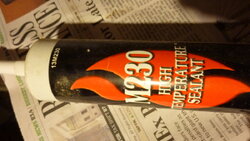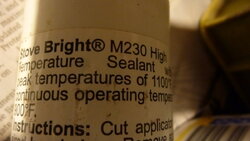im installing my first gasket on my rockland. ive never replaced one on any stove. my only question, what to do with the cut ends? i saw on a tutorial here to use masking tape, but im wonder if theres a better way? they will fray im guessing when its cut, and it will also be a weak spot for sealing.
give me some tips!
give me some tips!





 It's going on 5 years since I joined, and it seems like nothing.
It's going on 5 years since I joined, and it seems like nothing. 600*, like the auto parts stuff.
600*, like the auto parts stuff.